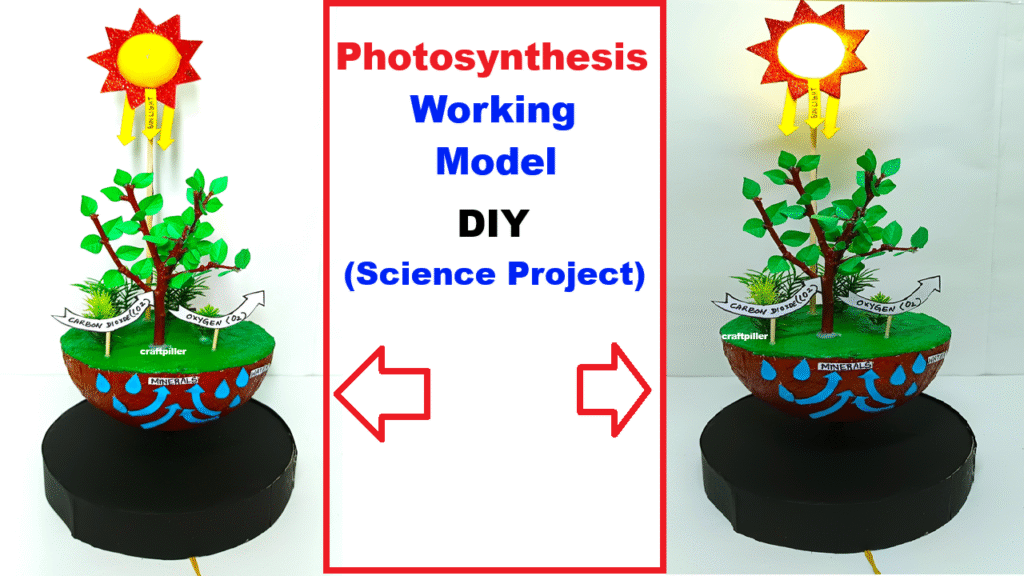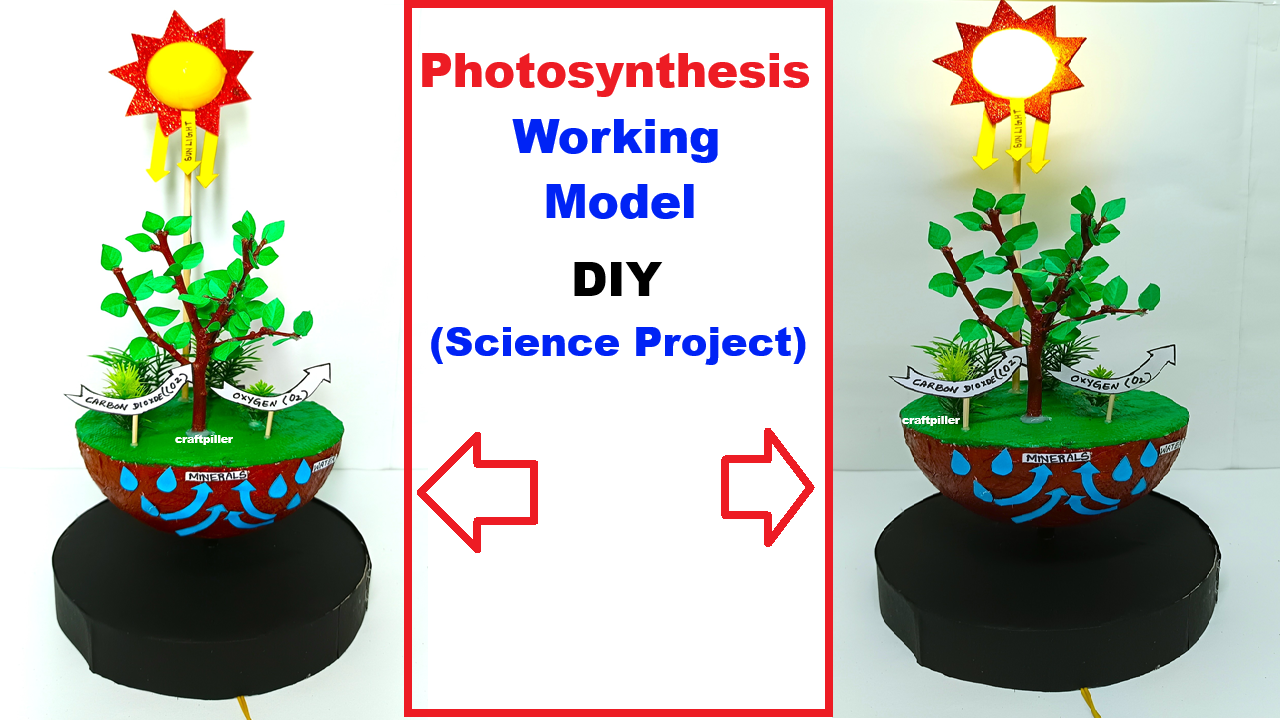Aim / Objective
To demonstrate how plants use sunlight, carbon dioxide, and water to produce food (glucose) and release oxygen, showing this through a rotating half-earth model with a plant setup.

Materials Required
- Half globe (or half-round thermocol / ball for Earth)
- Small DC motor (slow RPM) or geared motor
- 9V battery + connector
- Switch and wires
- Dry plant stem (for real look)
- Green color paper (for leaves)
- Blue, green, and brown paper (for Earth decoration)
- Cardboard base (sturdy platform)
- Small LED light (yellow or white) for Sun
- Plastic ball (for Sun cover)
- Glue gun or Fevicol
- Tape, scissors, markers
- Labels: “Sunlight”, “Carbon dioxide”, “Oxygen”, “Water”, “Glucose”
Model Construction / Steps
1️⃣ Prepare the Base
- Take a strong rectangular cardboard base (approx. 40 cm × 30 cm).
- Cover it with blue paper (sky) on one side and green/brown paper (land) on the bottom.
- On one corner, fix your 9V battery, switch, and motor wiring setup neatly.
2️⃣ Make the Rotating Half Earth
Cut a thermocol ball or plastic globe into half to represent Earth’s surface.
- Paint or cover the outside with blue and green paper (for oceans and land).
- On the flat side (top of half-sphere), add brown paper soil texture.
- Inside the cut section, show roots using brown yarn, thread, or wires.
- Fix this half Earth on a small rod or axis connected to the slow motor shaft — so it can rotate slowly.
Tip:
Use a geared DC motor (100 RPM or less) to make it rotate smoothly.
3️⃣ Add the Plant
- Fix a dry wooden stem vertically on top of the half-earth (soil side).
- Cut green paper leaves and paste them on the stem.
- Optional: add one small paper flower or fruit to make it realistic.
4️⃣ Add the Sunlight (LED Ball)
- On a vertical cardboard strip at the back, attach a small plastic ball painted yellow/orange — this will be your Sun.
- Place a small LED light inside the ball, connected to the battery (parallel connection with the motor).
- Add a small switch to turn ON/OFF the light (shows sunlight for photosynthesis).
5️⃣ Labeling and Arrows
- Use small paper arrows to show:
- CO₂ coming from air to leaves
- H₂O coming from roots
- O₂ going out from leaves
- Sunlight hitting leaves
- Add a neat label below:
“Photosynthesis: 6CO₂ + 6H₂O → C₆H₁₂O₆ + 6O₂”
Working Principle
When the switch is turned ON:
- The LED Sun glows, showing sunlight reaching the plant.
- The half-Earth rotates slowly, representing the Earth’s rotation and continuous process of photosynthesis.
- The plant absorbs sunlight, water, and carbon dioxide to make food (glucose) and release oxygen.
Scientific Explanation
This means plants take carbon dioxide (air) + water (soil) + sunlight energy → form glucose (food) and release oxygen.
Observation
- When the Sun (LED) is ON, it represents daytime photosynthesis.
- When OFF, no light = no photosynthesis.
- The rotating Earth shows that this process happens continuously around the world.
Conclusion
Plants are producers that prepare food using sunlight.
Photosynthesis maintains the oxygen and carbon dioxide balance in nature — essential for all living beings on Earth.

